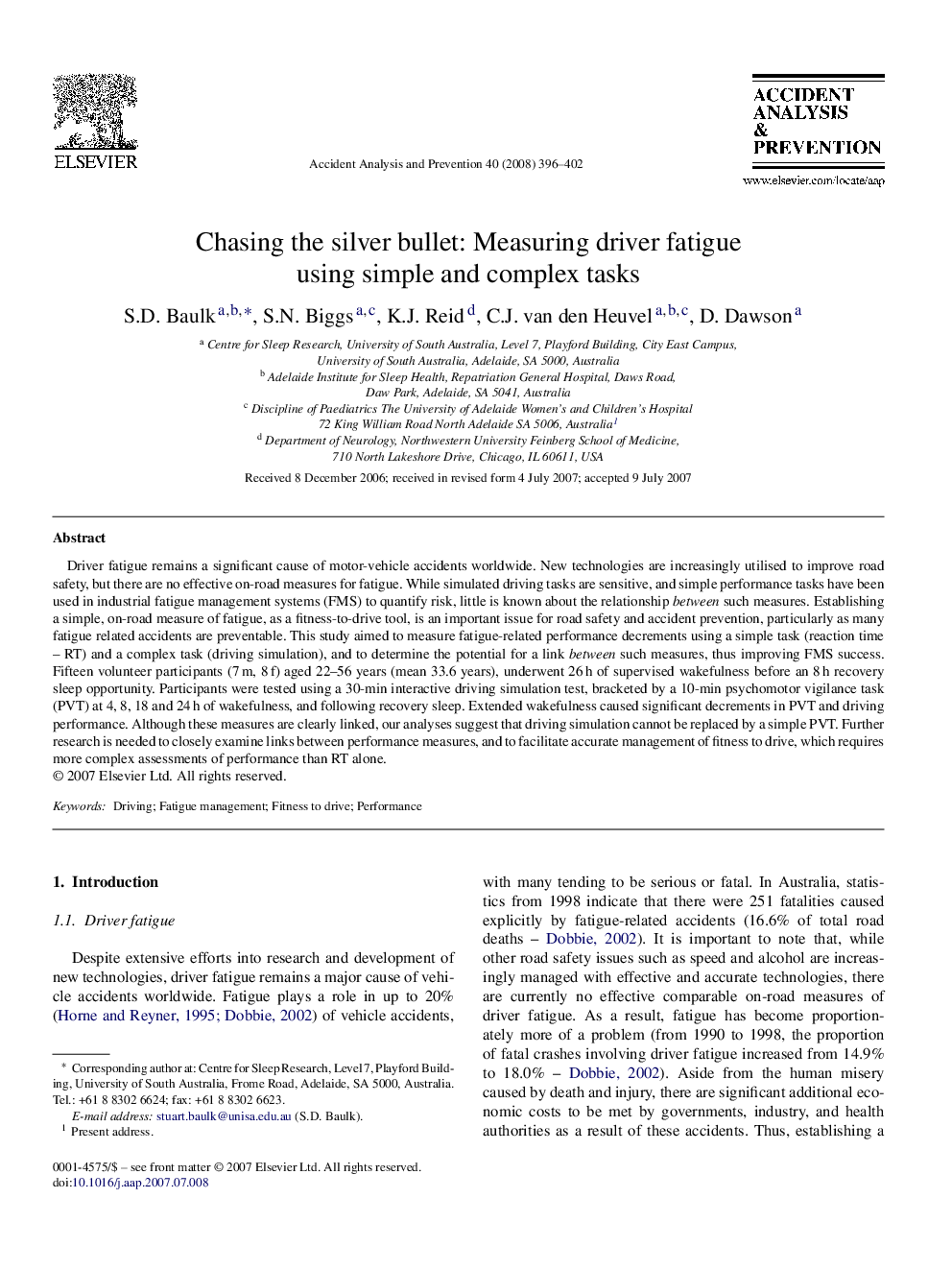| Article ID | Journal | Published Year | Pages | File Type |
|---|---|---|---|---|
| 573684 | Accident Analysis & Prevention | 2008 | 7 Pages |
Driver fatigue remains a significant cause of motor-vehicle accidents worldwide. New technologies are increasingly utilised to improve road safety, but there are no effective on-road measures for fatigue. While simulated driving tasks are sensitive, and simple performance tasks have been used in industrial fatigue management systems (FMS) to quantify risk, little is known about the relationship between such measures. Establishing a simple, on-road measure of fatigue, as a fitness-to-drive tool, is an important issue for road safety and accident prevention, particularly as many fatigue related accidents are preventable. This study aimed to measure fatigue-related performance decrements using a simple task (reaction time – RT) and a complex task (driving simulation), and to determine the potential for a link between such measures, thus improving FMS success. Fifteen volunteer participants (7 m, 8 f) aged 22–56 years (mean 33.6 years), underwent 26 h of supervised wakefulness before an 8 h recovery sleep opportunity. Participants were tested using a 30-min interactive driving simulation test, bracketed by a 10-min psychomotor vigilance task (PVT) at 4, 8, 18 and 24 h of wakefulness, and following recovery sleep. Extended wakefulness caused significant decrements in PVT and driving performance. Although these measures are clearly linked, our analyses suggest that driving simulation cannot be replaced by a simple PVT. Further research is needed to closely examine links between performance measures, and to facilitate accurate management of fitness to drive, which requires more complex assessments of performance than RT alone.
